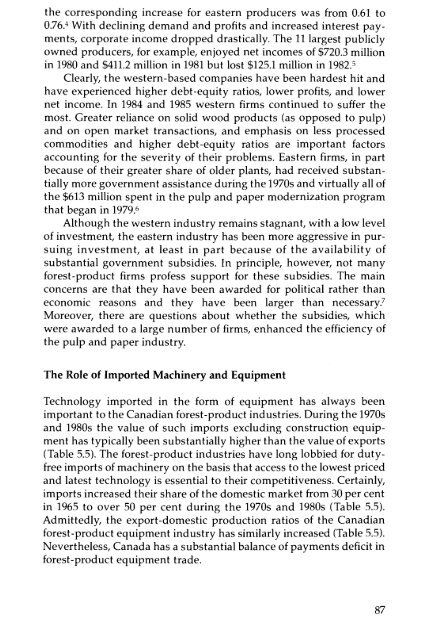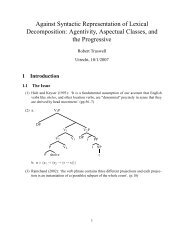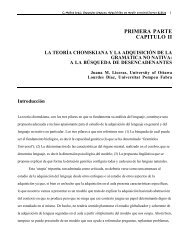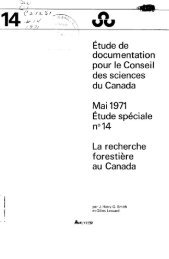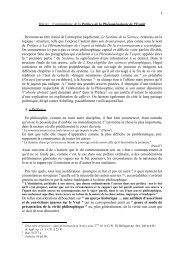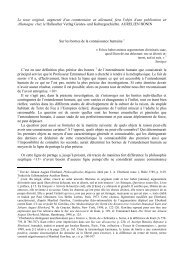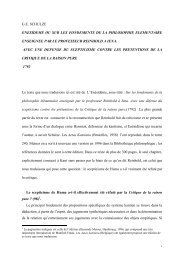Technology and the Canadian Forest-Product Industries ... - ArtSites
Technology and the Canadian Forest-Product Industries ... - ArtSites
Technology and the Canadian Forest-Product Industries ... - ArtSites
You also want an ePaper? Increase the reach of your titles
YUMPU automatically turns print PDFs into web optimized ePapers that Google loves.
<strong>the</strong> corresponding increase for eastern producers was from 0.61 to0.76. 4 With declining dem<strong>and</strong> <strong>and</strong> profits <strong>and</strong> increased interest payments,corporate income dropped drastically. The 11 largest publiclyowned producers, for example, enjoyed net incomes of $720.3 millionin 1980 <strong>and</strong> $411.2 million in 1981 but lost $125.1 million in 1982. 5Clearly, <strong>the</strong> western-based companies have been hardest hit <strong>and</strong>have experienced higher debt-equity ratios, lower profits, <strong>and</strong> lowernet income. In 1984 <strong>and</strong> 1985 western firms continued to suffer <strong>the</strong>most. Greater reliance on solid wood products (as opposed to pulp)<strong>and</strong> on open market transactions, <strong>and</strong> emphasis on less processedcommodities <strong>and</strong> higher debt-equity ratios are important factorsaccounting for <strong>the</strong> severity of <strong>the</strong>ir problems. Eastern firms, in partbecause of <strong>the</strong>ir greater share of older plants, had received substantiallymore government assistance during <strong>the</strong> 1970s <strong>and</strong> virtually all of<strong>the</strong> $613 million spent in <strong>the</strong> pulp <strong>and</strong> paper modernization programthat began in 1979. 6Although <strong>the</strong> western industry remains stagnant, with a low levelof investment, <strong>the</strong> eastern industry has been more aggressive in pursuinginvestment, at least in part because of <strong>the</strong> availability ofsubstantial government subsidies. In principle, however, not manyforest-product firms profess support for <strong>the</strong>se subsidies. The mainconcerns are that <strong>the</strong>y have been awarded for political ra<strong>the</strong>r thaneconomic reasons <strong>and</strong> <strong>the</strong>y have been larger than necessary?Moreover, <strong>the</strong>re are questions about whe<strong>the</strong>r <strong>the</strong> subsidies, whichwere awarded to a large number of firms, enhanced <strong>the</strong> efficiency of<strong>the</strong> pulp <strong>and</strong> paper industry.The Role of Imported Machinery <strong>and</strong> Equipment<strong>Technology</strong> imported in <strong>the</strong> form of equipment has always beenimportant to <strong>the</strong> <strong>Canadian</strong> forest-product industries. During <strong>the</strong> 1970s<strong>and</strong> 1980s <strong>the</strong> value of such imports excluding construction equipmenthas typically been substantially higher than <strong>the</strong> value of exports(Table 5.5). The forest-product industries have long lobbied for dutyfreeimports of machinery on <strong>the</strong> basis that access to <strong>the</strong> lowest priced<strong>and</strong> latest technology is essential to <strong>the</strong>ir competitiveness. Certainly,imports increased <strong>the</strong>ir share of <strong>the</strong> domestic market from 30 per centin 1965 to over 50 per cent during <strong>the</strong> 1970s <strong>and</strong> 1980s (Table 5.5).Admittedly, <strong>the</strong> export-domestic production ratios of <strong>the</strong> <strong>Canadian</strong>forest-product equipment industry has similarly increased (Table 5.5).Never<strong>the</strong>less, Canada has a substantial balance of payments deficit inforest-product equipment trade.87


